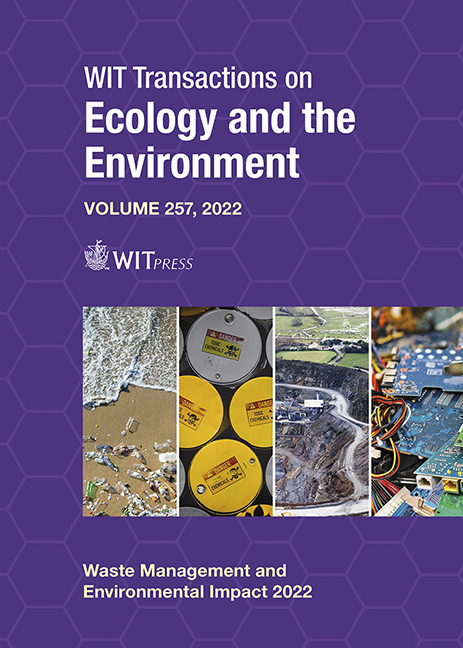IN-DEPTH ANALYSIS ON ODOUR DISPERSION MODELLING AND ITS APPLICATIONS TO WASTE MANAGEMENT OPERATIONS
Price
Free (open access)
Transaction
Volume
257
Pages
12
Page Range
107 - 118
Published
2022
Paper DOI
10.2495/WMEI220101
Copyright
Author(s)
LUCA ADAMI, MARCO SCHIAVON, MARCO TUBINO
Abstract
The management of waste entails the emission of a large variety of compounds into the atmosphere. Waste management processes (e.g. collection and transportation of waste, discharging of waste in dedicated facilities, mechanical–biological treatments and landfill disposal) are known for causing the problem of odour nuisance in the vicinity of waste treatment plants. Substances like volatile organic compounds, sulphides and nitrogen-based compounds are usually associated with waste management processes and, in general, are characterised by low odour threshold values, i.e. they are detected by the human sense of smell even at relatively low concentrations in ambient air. Dispersion modelling represents a fundamental step for the estimation of the odour impact near odour emission sources. However, the results of odour dispersion simulations are strongly affected by the initial hypotheses on the emission sources considered, by specific modelling parameters and by the quality of meteorological and morphological input data. In addition, the variability in the human perception of odour may not allow making universal conclusions on the results of an odour impact assessment, and this further complicates the matter. The aim of this paper is to shed light on the criticalities involved in the assessment of the odour impacts from waste management activities. The paper analyses and discusses the potential influences of the choices made during the preparation of dispersion modelling simulations. This contribution is expected to enrich the knowledge base on odour dispersion modelling and to help proponents, environmental consultants and environmental agencies to estimate the impacts induced by current and future waste management operations.
Keywords
odour nuisance, emissions, odour impact, waste treatments, mechanical–biological treatments, dispersion models




